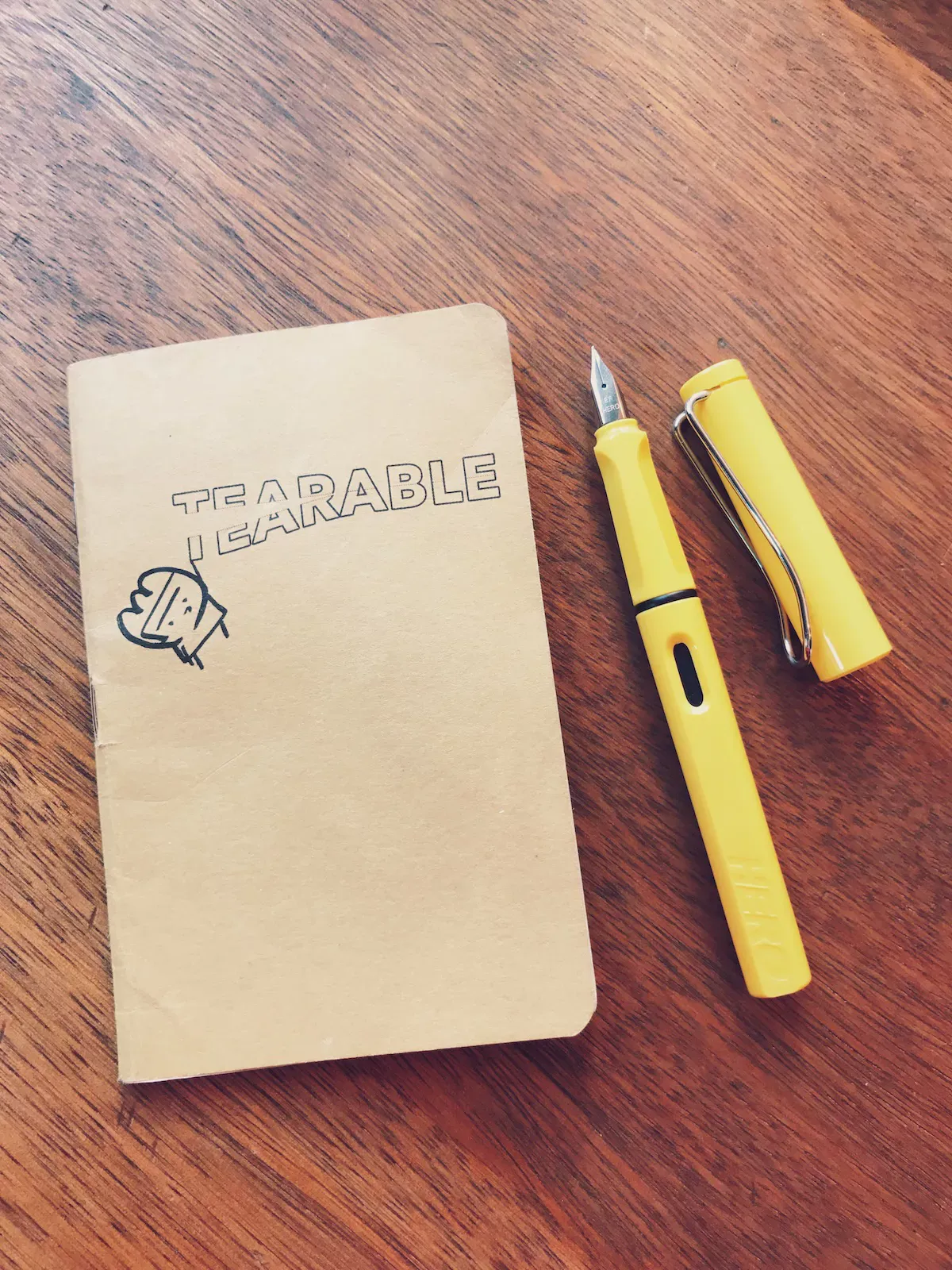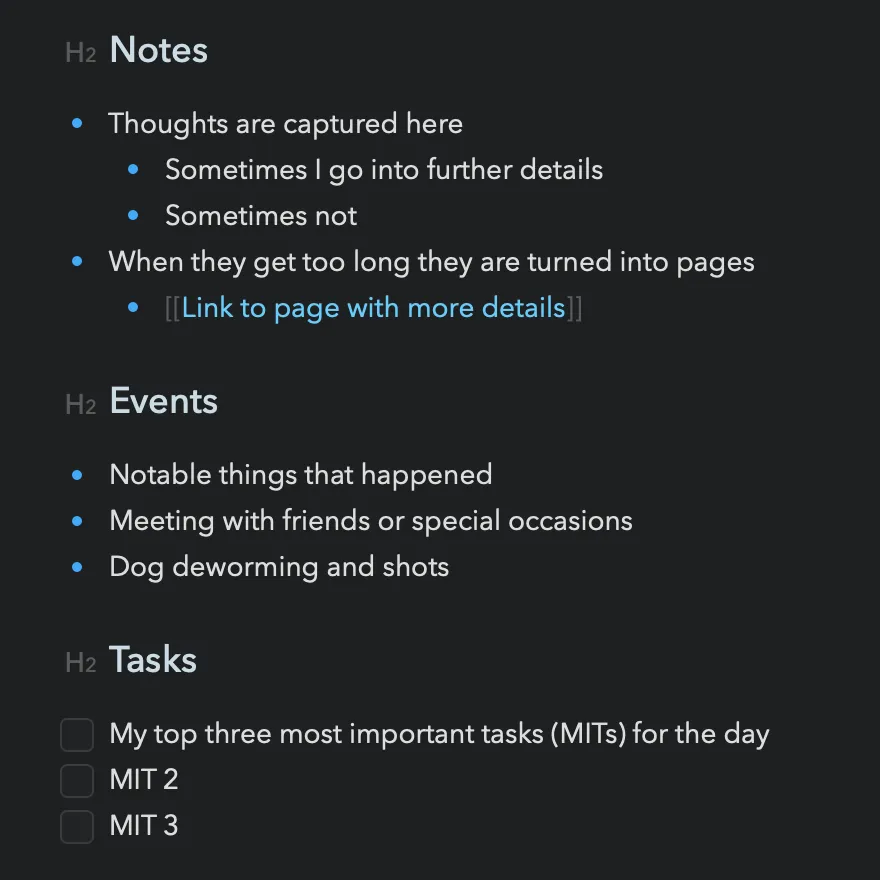How my daily journal evolved into a daily log
 jenxi.com
jenxi.com Vision alchemist crafting strategic innovation & AI adoption. Bridging startups to China's ecosystem advantage. Building a cyberbrain. Registered pharmacist × Brand strategist × Storyteller
I have a habit of making daily journal entries. I was sharing a thread on Twitter about my journalling journey and how I keep a daily log now. The more I wrote, I knew I had to expand the thread into an article.
Diary to journal
Journalling stems from my teenage years of writing a diary. I wrote to practice writing and to pen my thoughts.
When I started junior college, I outgrew my diary. It was only in 2011 that I started to write a journal again. This was borne not from a desire to keep a journal, but from my obsession with fountain pens and notebooks.
One of the items on my bucket list was to pick up cursive writing. So I started practicing daily. After practicing the individual letters for a few weeks, it was time to put them together and write actual words. What better to do so than to write a journal?

Tearable notes
It became a way for me to reflect upon my days. Writing longhand is a mindful process where I sit with my thoughts and pen them down. My thoughts could not run faster than my hand. At the same time, the words just keep flowing as my thoughts pour out.
When I leapt into entrepreneurship, I had less time for journalling. I no longer had an hour to sit down with my thoughts and my notebook. And even when I did, my thoughts were on the business.
Day One
I maintained a journal in the Day One app where I would reflect upon the day and note down significant events, thoughts, the mood I was in, and whether I felt energised or drained.
However, Day One evolved into something more like a personal feed. It was my personal Facebook and Instagram feed with myself as the only audience. Instead of sharing snippets of my life in public, I post them in Day One for myself to look back upon weeks or months later.
Bullet journal
You might be familiar with the bullet journal method created by Ryder Carroll. After reading his book The Bullet Journal Method, I gave it a try but adapted it to suit my system.
It helped me shift my journalling mindset from writing in prose to jotting down bullet points. By capturing my key thoughts in bullet points, I am able to record the thoughts when they appear in my head.
It might seem like a trivial act, but I have lost count of the number of times fleeting thoughts escape me before I can commit them to memory. I don’t trust my memory anymore. I prefer to write things down in my personal vault in Bear Notes that acts as a second brain that never forgets. Unless I fail to backup my notes.
I find that by putting down a few words in bullet points, I somehow unlock the floodgates and words start pouring into paragraphs. Of course, there are times when the words fail to flow, but at least the key ideas and points have been recorded for me to come back and expand upon later on.
Daily log
Since I can capture my thoughts so easily, I started recording them throughout the day. I don’t try to catch every thought and idea that appear in my mind. I write down what matters.
Besides my thoughts, I also note down content that I consume. When I come across content that I resonate with, or want to research more on, I would write down the key information that caught my eye, and link to the website, podcast or video for future reference.
This helps me to find information that I might want to retrieve later on. Before I started doing this, I would often be talking to someone about something I saw and want to share the source with them. Only to realise that I can’t remember the name or title and end up not being able to find the information. Now I just need to search Bear Notes and I can easily retrieve the information.
By noting down what I want to research instead of dropping what I’m doing to search for something, I ensure that I remember what I want to look up while not allowing distraction to interrupt whatever task I have on hand.
Linked notes
I watched Andy Matuschak’s video on how he takes notes and noticed how he would turn his bullet points into standalone notes when they become too long to be just a point.
Since then, I’ve been doing the same as well. When my bullet points grow to a certain size that they don’t make sense to be just bullet points, I would create a new note for them. For example, writing this blog post spurred me to delve more into fountain pens. Instead of retaining what I wrote about fountain pens in this article, I broke it off into its own note where it turned into an article on its own.
This works for thoughts that I take down too. Rather than have a long series of bullet points about a certain sub-topic, I put them into a new note where the sub-topic becomes a topic of its own. I just link to the new note from the original note.
By doing so, each note become a topic of its own that other notes can link to. This is invaluable to both my daily logging and personal knowledge manager systems.
Snapshot of my day

My daily log in Bear
My daily logging functions as a snapshot of each day. It tracks my thoughts and helps me to maintain a clear perspective of my direction and how it might have changed subconsciously.
By reviewing my daily logs or journal entries, I am able to understand if I have maintained the course I set out to achieve, or if I have deviated so much that course correction is due.